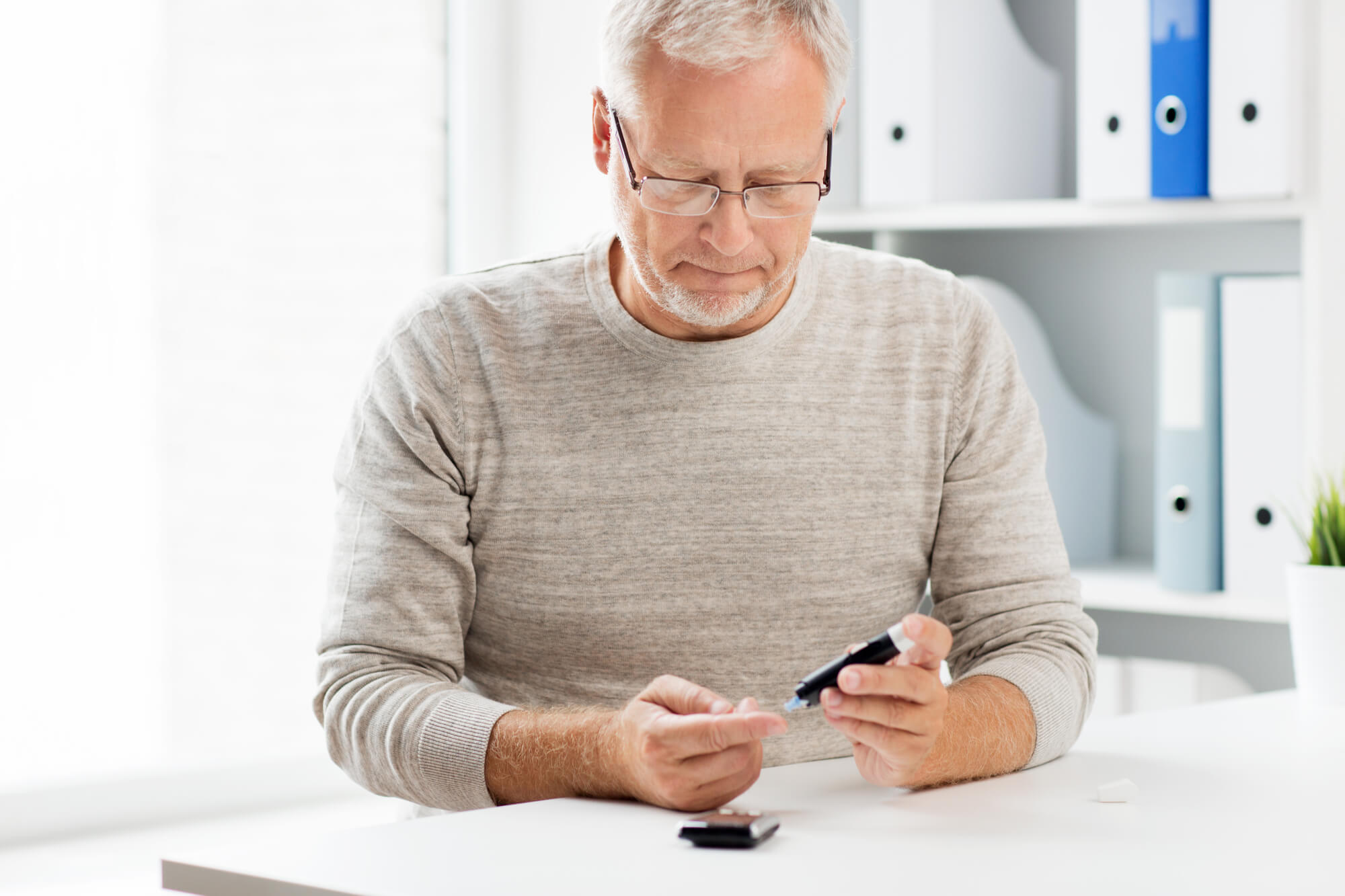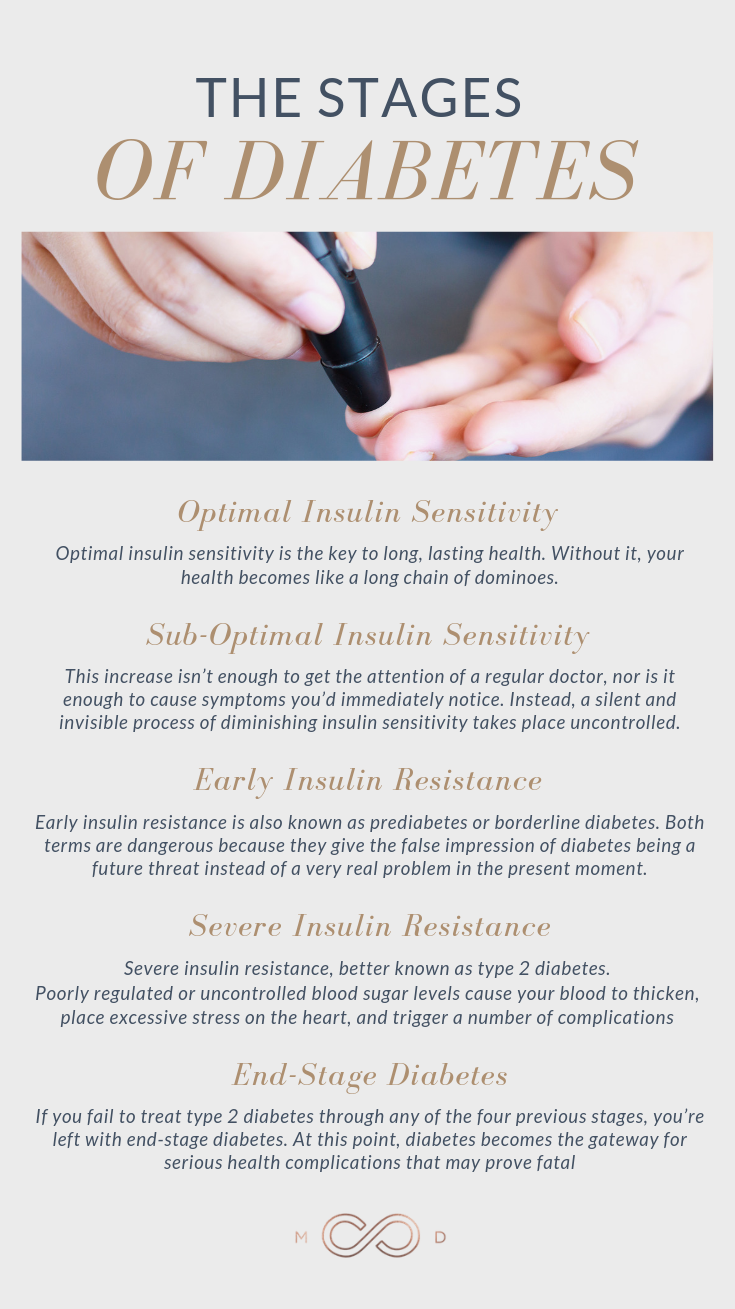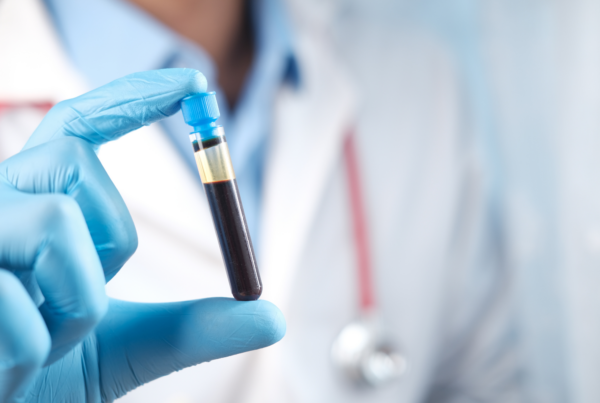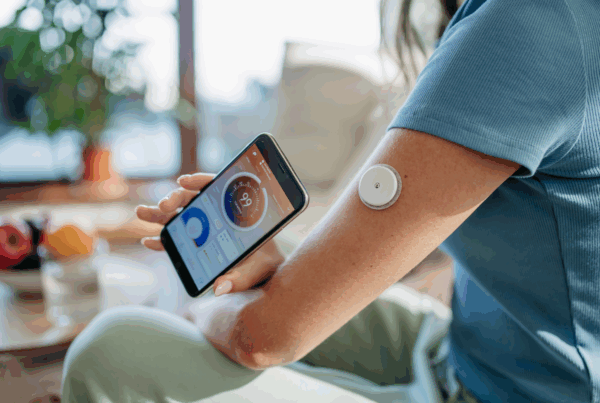Type 2 diabetes isn’t like a broken leg. It’s not an injury that happens without any warning in a split second. Quite the opposite!
Type 2 diabetes, which accounts for up to 95% of all diabetes cases, develops on a spectrum over the course of many years and sends subtle warning signs to indicate trouble. Despite this, most of us are taught that type 2 diabetes is a cut-and-dry condition, something we either “have” or “don’t have.”
This sideways thinking isn’t just flawed; it’s dangerous. Diabetes isn’t an “all or nothing” disease, and treating it as such is exactly what leads otherwise intelligent, successful men and women to suffer the severe consequences of uncontrolled high blood sugar and insulin resistance.
Diabetes is just like cancer or heart disease — if you ignore warning signs and fail to catch it early, you doom yourself to aggressive and deadly results.
You’ve worked your entire life to become successful, so don’t give diabetes the power to become your downfall. Educate yourself on diabetes, blood sugar, and insulin resistance so that your life isn’t cut short by a preventable disease.
What Is Blood Sugar?
Blood sugar is also known as glucose. It’s the main type of sugar in your blood that provides energy to the trillions of cells throughout your body. Your eating choices significantly influence the amount of glucose in your blood.
Dietary sugar exists in many forms, some worse than others for your health:
- Fructose: a simple sugar used in sweeteners and processed foods
- Glucose: the body’s preferred source of energy at healthy levels
- Galactose: a simple sugar found in milk, yogurt, and other dairy products
Even though glucose energizes cells, too much of a good thing is always dangerous. High blood glucose doesn’t give you extra energy or help your body function at optimal levels. Instead, high blood glucose wreaks havoc on your health.
The Two Ways to Normalize Blood Glucose
The human body only has two natural ways to process blood glucose and keep levels stabilized within a safe range. First, the skeletal muscles consume and burn glucose. The problem is that skeletal muscle remains the same — or even decreases — as we age, so it can’t burn extra glucose in the event of rising blood glucose levels.
This leaves insulin as the body’s main method to process glucose and balance blood glucose levels. Insulin is a hormone produced by the pancreas as soon as it senses rising blood glucose levels. If you eat a granola bar as a mid-morning snack, your pancreas identifies the extra glucose in your blood and produces insulin in response. That insulin streams into the blood and transports glucose inside muscle, fat, and liver cells.
Your body’s natural ability to produce insulin and control blood glucose is known as glycemic control. If you eat well and only splurge on sweets, treats, and carbs sporadically, you probably have strong glycemic control.
On the other hand, if you continually eat refined and processed foods that flood your blood with excess glucose, your pancreas is forced to produce more and more insulin in an attempt to process and control so much sugar in your blood. It’s a type of crisis management that works in solitary situations like Thanksgiving dinner or your birthday party, but not every single day.
If your pancreas is constantly producing high levels of insulin to handle your high blood glucose, you’ll eventually develop a resistance to the power of insulin.
Chronically high blood glucose levels dim your body’s response to insulin. Insulin resistance is a dangerous condition that causes type 2 diabetes and the many complications associated with it.
What Happens When Insulin Resistant Diabetes Forms?
Insulin resistance is a huge health threat in America, even for men and women who believe they’re perfectly healthy. It’s estimated that more than 30% of the U.S. population may be insulin resistant, but the symptoms can take years to manifest in a way that can’t be ignored.
Insulin resistance creates a destructive cycle that starts and ends with high blood glucose. When your body becomes resistant to insulin, the pancreas produces even more insulin in an attempt to lower blood glucose levels. That doesn’t help at all. Instead, it causes stronger insulin resistance, which in turn allows blood glucose levels to rise even higher.
Insulin and blood glucose levels may rise for months or years until the pancreas becomes too damaged to produce high levels of insulin. The result of low insulin production and minimal insulin response creates the perfect storm for blood glucose levels to surge out of control and trigger immeasurable health consequences. In other words, uncontrolled type 2 diabetes.
The Stages of Diabetes
I mentioned before that diabetes isn’t a condition that you simply “have” or “don’t have.” Now you can see why. Type 2 diabetes is simply severe insulin resistance. Since insulin resistance begins gradually, you may be in the early stages of diabetes development for years without knowing it. It’s only once you’re diagnosed with type 2 diabetes that you realize you “have” the condition and need to address it.
Optimal Insulin Sensitivity
If you don’t already have optimal insulin sensitivity, you should make every effort to restore it. Optimal insulin sensitivity makes it easy for your cells to properly utilize glucose from your blood. When insulin can do its job without any obstacles, your blood glucose levels remain stabilized and enhance your health instead of sabotaging it.
Consider these compelling benefits of optimal insulin sensitivity:
- Prevent type 2 diabetes
- Lose weight or maintain a healthy weight
- Feel energized and clear-minded
- Reduce risk of other metabolic diseases
- Protect pancreas function
- Stop dietary sugar cravings
- Enhance body’s natural healing process
The truth is that optimal insulin sensitivity is the key to long, lasting health. Without it, your health becomes like a long chain of dominoes. Poor insulin sensitivity is the first domino to fall, and the rest follow soon after.
Sub-Optimal Insulin Sensitivity
Sub-optimal insulin sensitivity is extremely common, but unfortunately, it’s rarely identified or diagnosed. In this stage of type 2 diabetes, your blood glucose levels are still within a “normal” range under 100 mg/dl, but they’re increasing relative to your own previous healthy blood glucose levels. Your morning blood glucose level might creep from 70 mg/dl to 76 mg/dl.
This increase isn’t enough to get the attention of a regular doctor, nor is it enough to cause symptoms you’d immediately notice. Instead, a silent and invisible process of diminishing insulin sensitivity takes place uncontrolled.
This is exactly why I work so closely with each of my members to provide holistic care. By identifying your insulin sensitivity problems at this stage, it’s infinitely easier to reverse existing damage and get back on track to optimal insulin sensitivity. After all, diabetes is a spectrum, and your choices and health care determine which direction you travel along the spectrum.
Early Insulin Resistance
Early insulin resistance is also known as prediabetes or borderline diabetes. Both terms are dangerous because they give the false impression of diabetes being a future threat instead of a very real problem in the present moment. Nearly 90 million Americans have early insulin resistance, all of whom are very likely to develop full-blown type 2 diabetes if they don’t seek proper treatment and make lifestyle adjustments.
Early insulin resistance causes rising blood glucose levels close to or over 100 mg/dl, but not high enough to be formally considered type 2 diabetes. Prediabetes is the ultimate warning sign that you need to change your habits. Though this stage of diabetes doesn’t always present symptoms, some common signs include the following:
- Increased thirst
- Frequent urination
- Blurred vision
- High blood pressure and cholesterol
- Weight gain
If you ignore the warning signs of early insulin resistance, your next stop is a type 2 diabetes diagnosis.
Severe Insulin Resistance
Severe insulin resistance, better known as type 2 diabetes, is a condition that affects more than 30 million Americans.
If you allow severe insulin resistance to rule your body, the consequences become worse with every passing day. Poorly regulated or uncontrolled blood glucose levels cause your blood to thicken, place excessive stress on the heart. Many people are surprised to learn that their high blood pressure is directly impacted by elevated blood glucose levels.
This is due to the inflammatory response triggered by insulin-resistant diabetes. It’s an effect responsible for many other complications as well:
- Obesity
- Heart attack and stroke
- Nerve damage
- Vision problems
- Teeth and gum infections
- Kidney damage
- Poor blood flow
- Slow and inefficient wound healing
Even severe insulin resistance can be successfully treated — and even reversed! — with healthier lifestyle habits. If you have diabetes right now, you have a choice: get the help you need to improve your health or careen into end-stage diabetes.
End-Stage Diabetes
Diabetes is an aggressive and progressive disease, so it never sits idle. It either gets better or worse, but it doesn’t stay the same. If you fail to treat type 2 diabetes through any of the four previous stages, you’re left with end-stage diabetes.
At this point, diabetes becomes the gateway for serious health complications that may prove fatal:
- Kidney disease or failure
- Amputation from non-healing wounds
- Cardiovascular disease
- Nerve death
- Blindness
- Alzheimer’s disease
- Chronic skin conditions
- Hearing impairment
- Gastrointestinal issues
- Coma
The good news is that end-stage diabetes isn’t inevitable. You can take action right now to reverse your course of diabetes and stop diabetes from stealing your life.
The Bottom Line: Diabetes Is Chronic and Progressive Without Proper Response
There’s no way around it: type 2 diabetes is chronic and progressive. It won’t go away if you close your eyes and refuse to acknowledge it. Nobody with uncontrolled diabetes lives a long or fulfilling life. Even if you manage to live to 70 or 80 with diabetes, you’ll suffer through decades of painful health problems that ruin your quality of life.
The only way to stop diabetes is to make fundamental changes to your eating and lifestyle habits. Medication isn’t a magical solution because it doesn’t address the real reasons for your diminished insulin sensitivity. It’s up to you to control your carbohydrate intake and implement habits that can increase insulin sensitivity.
I help all of my diabetic members limit their carbohydrate intake to about 50-75 net carbs a day. Instead of flooding their blood with insulin, I help my members recalibrate their bodies, so that they can respond to insulin and regulate blood glucose properly. It’s so important to find a doctor who will take the time to focus on your unique needs and treat your diabetes holistically, instead of simply prescribing a medication with more side effects than benefits.
Contact me today at Brentwood MD in Nashville, Tennessee to learn more about the best diabetes treatment methods. I firmly believe that a doctor should be your partner and advocate in health, which is why I’m here to help you hunt for signs of insulin resistance and respond to them while time is still on your side.

Dr. Aaron Wenzel is a concierge physician specializing in the care of fast-moving entrepreneurs, executives, and public figures in the Nashville, TN area. Dr. Wenzel’s diverse life experience and extensive training in family medicine, emergency care, nutrition, and hormone replacement therapies give him the unique platform to provide unmatched care for his patients.








